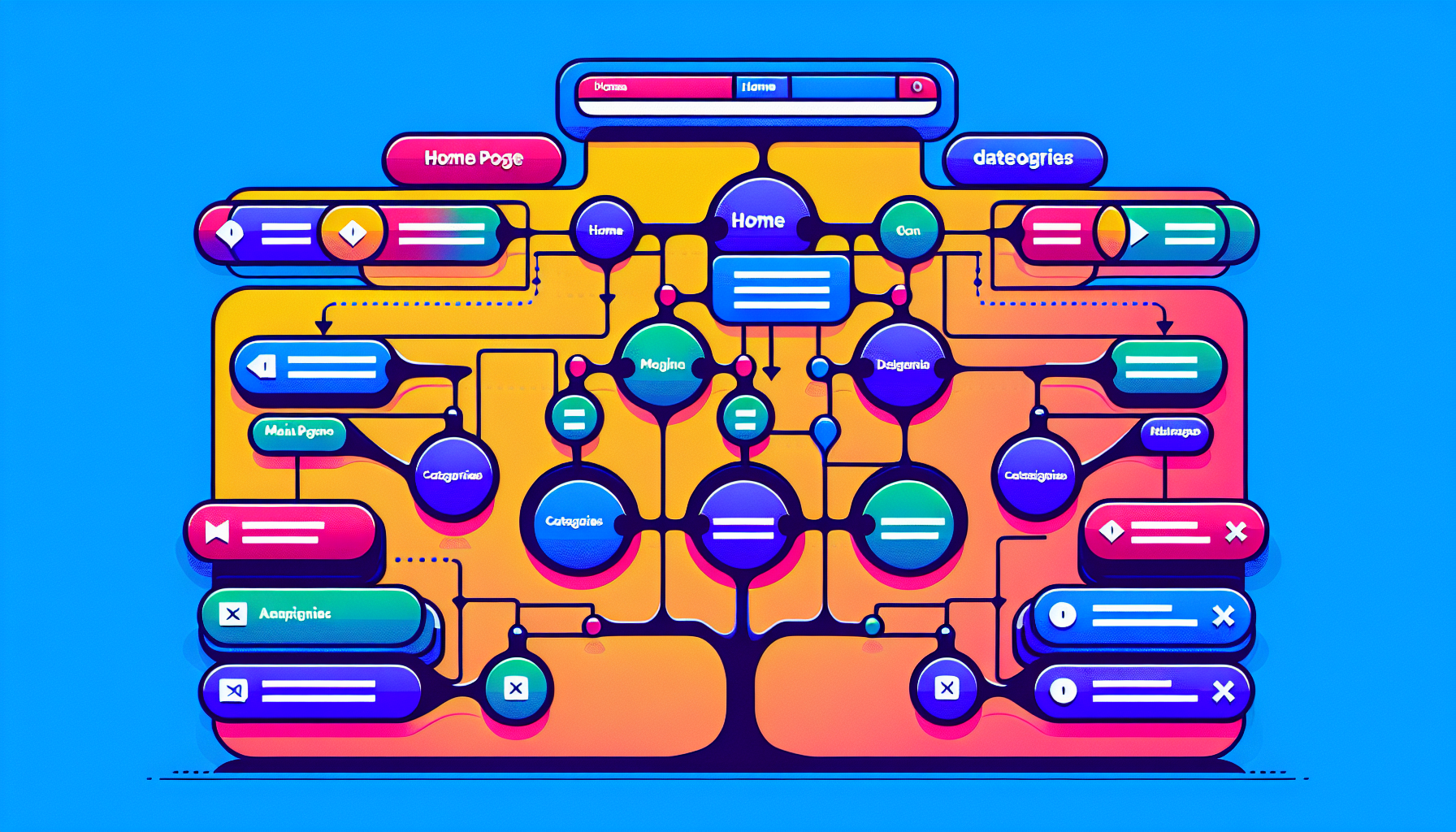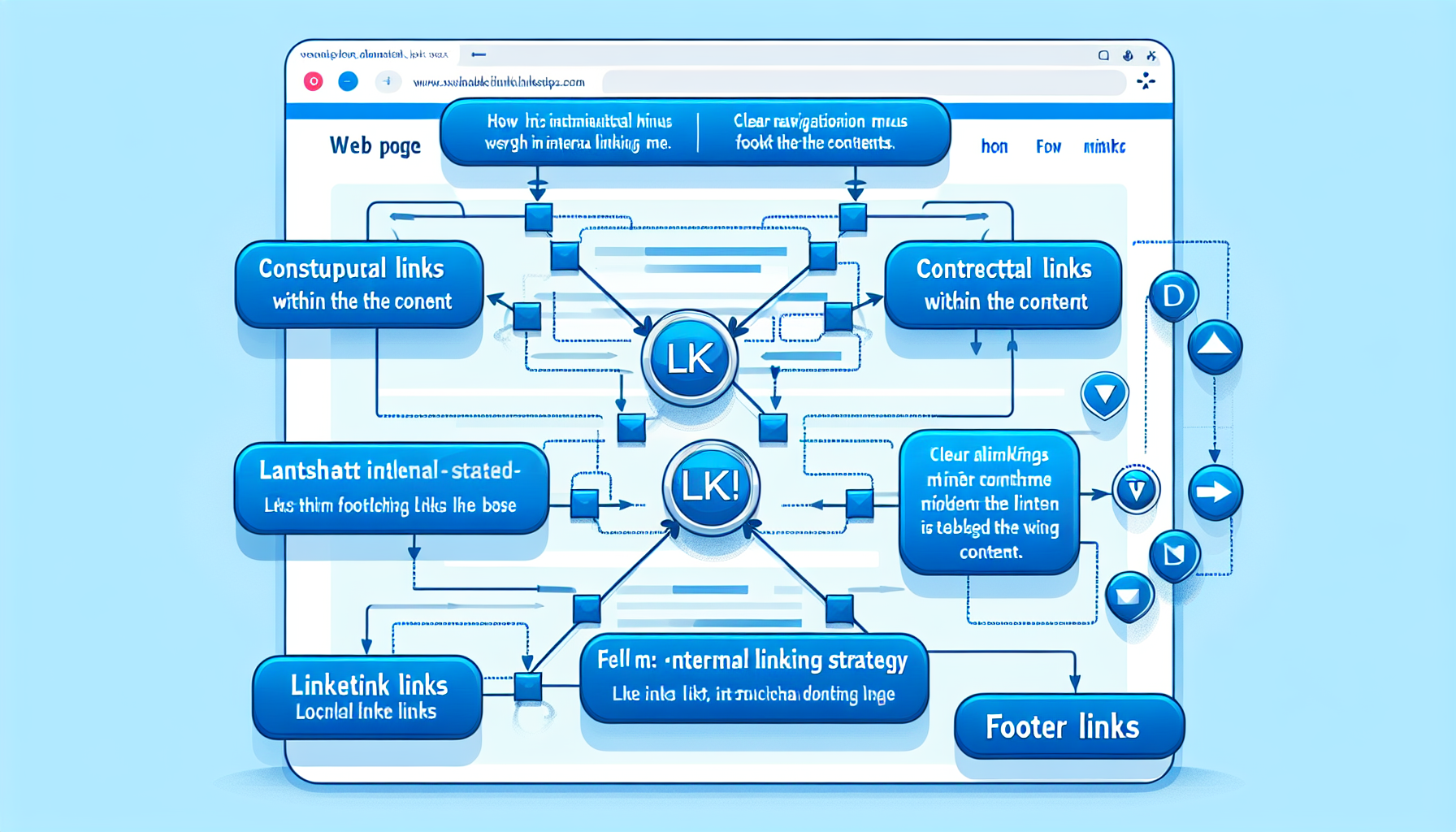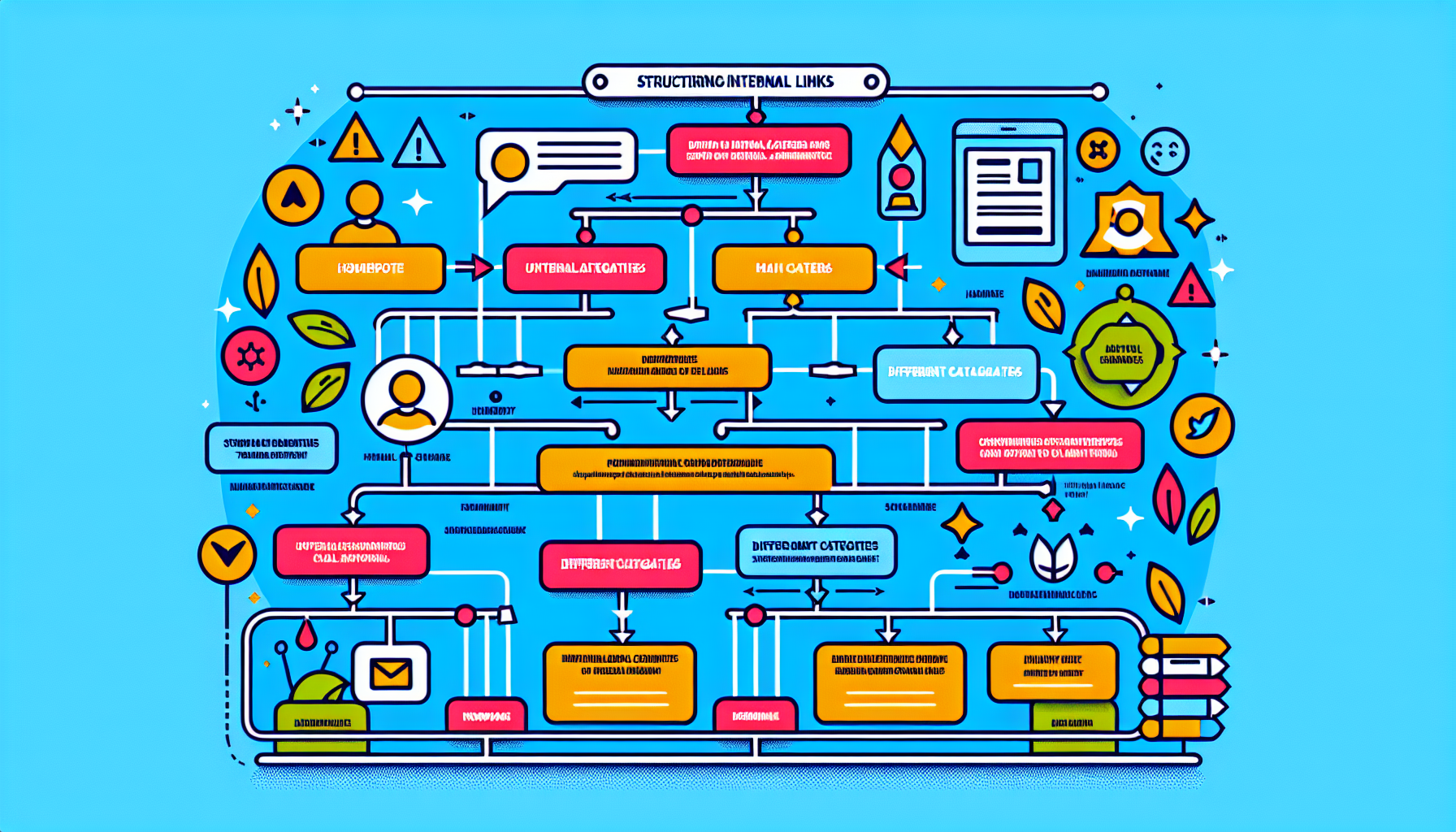Internal links are crucial for both user experience and search engine optimization. They help guide visitors through a website, making it easier for them to find relevant content and engage with more pages. By connecting various pieces of content, internal links can decrease bounce rates and increase the time users spend on your site, enhancing overall engagement metrics.
From an SEO perspective, internal links are instrumental in defining the architecture and hierarchy of your website. They assist search engines like Google in indexing your site more effectively by providing clear pathways for crawlers to follow. This can lead to better visibility of individual pages and improvement in search rankings.
Furthermore, internal links help in distributing link equity (also known as “link juice“) across your site. By linking high-authority pages to newer or less visited pages, you can boost the overall authority and relevance of those pages, effectively improving their performance in search results.
In addition to these benefits, internal links contribute to the overall coherence of your content. They enable you to cluster related articles or pages, creating a unified thematic network that both users and search engines can easily navigate and understand. This coherence can enhance the topical authority of your site, making it a go-to resource for specific subjects.
Principles of effective internal linking

Effective internal linking starts with a logical site structure. Aim for a hierarchical architecture where your homepage links to main category pages, which in turn link to subcategory pages and individual articles. This helps create a clear pathway for users and search engines to follow.
Consistency and relevance are key principles when adding internal links. Ensure that the linked pages are contextually related to each other. For instance, if you have a blog post discussing ‘Content Marketing Strategies,’ it’s beneficial to link to other posts that delve deeper into specific tactics like ‘Email Marketing’ or ‘Social Media Campaigns.’ This not only aids in SEO but also enriches the user’s journey through your content.
Using a mix of direct and indirect links can also be effective. Direct links go from a point A to point B explicitly, while indirect links might take the user through a more scenic route, perhaps through a related category page. Both types have their place; direct links are straightforward and boost page relevance quickly, whereas indirect links help users explore broader themes.
It’s essential to avoid excessive linking. Bombarding a page with too many internal links can overwhelm the user and diminish the impact of each link. Quality trumps quantity here—focus on a few well-chosen links that add genuine value to the reader’s understanding and navigation.
Consider the placement of your internal links. Links placed higher up on a page generally carry more weight with search engines compared to those placed lower down. In-content links—those embedded within the body text of your articles—tend to be the most effective, as they are naturally part of the narrative flow.
Choosing anchor text for internal links

When it comes to choosing anchor text for internal links, the goal is to make it both user-friendly and search engine-friendly. Anchor text refers to the visible, clickable text in a hyperlink. Ideally, the chosen text should be descriptive enough to give users and search engines an idea of what the linked page is about, thereby improving relevance and click-through rates.
Avoid generic terms like “click here” or “read more” for your anchor text. Instead, opt for keyword-rich phrases that accurately describe the content of the target page. For instance, if you’re linking to an article about “SEO best practices,” the anchor text should be something like “SEO best practices” rather than a vague term. This not only aids in SEO but also sets clear expectations for the user.
Balance is crucial. While using keyword-rich anchor text can boost your SEO efforts, keyword stuffing should be avoided. Overloading your internal links with repetitive keywords can lead to penalties from search engines. Aim for natural, contextually fitting phrases that provide clarity without overdoing the keywords.
Variety is another important factor. Using the same anchor text repeatedly across multiple internal links can appear spammy. Instead, try to diversify your anchor text while still keeping it relevant to the content. For example, besides using “SEO best practices,” you could use variations like “best practices for SEO” or “effective SEO strategies.” This keeps your internal linking strategy dynamic and user-centric.
The context in which your anchor text is placed also matters. Ensure that the surrounding content provides additional context for the linked page. Search engines analyze the content around the anchor text to determine its relevance, so it’s beneficial to surround your links with related, informative content.
Consider the length of your anchor text. While longer, descriptive phrases can be useful, they should not become overly lengthy or cumbersome. Aim for a concise, yet descriptive approach. Generally, a good anchor text length is between three to six words, though this can vary based on the specific context and content.
Regularly review and update your anchor texts as part of your ongoing SEO maintenance. As your website evolves and new content is added, older links and their anchor text might need adjustments to stay relevant and effective. Periodic audits can help you identify and rectify any outdated or ineffective anchor texts, ensuring your internal linking remains robust and beneficial.
Strategies for organizing your internal links

Organizing internal links efficiently starts with a well-thought-out content strategy. Begin by mapping out the core topics of your site and their subtopics. This blueprint can guide you in structuring your content into clusters or silos, where each main topic page links to relevant subtopic pages. This not only establishes a strong thematic coherence but also aids search engines in understanding the topical relevance of each page.
Content clusters are highly effective for organizing internal links. A pillar page that covers a broad subject in-depth can link out to and be linked by several other content pieces that address subtopics. For instance, a comprehensive guide on ‘Digital Marketing’ can link to and receive links from specific articles on ‘Search Engine Optimization,’ ‘Content Marketing,’ ‘Email Marketing,’ etc. This cluster approach fosters a network of internal links that boosts the authority and visibility of each page within the cluster.
Make sure to regularly update and expand your internal linking structure as new content is added to your site. This proactive approach ensures that all new pieces are properly integrated into your existing content clusters. It also helps in maintaining the relevance and accuracy of your internal links, which can enhance user experience and SEO performance.
Utilize breadcrumb navigation to assist in the organization and discoverability of your internal links. Breadcrumbs provide a secondary navigation aid that shows users the path they took to arrive at a particular page. This not only enhances user navigation but also creates additional internal links, which can be beneficial for SEO.
Efficient categorization of content can significantly impact the organization of internal links. Use tags and categories wisely to group related content together. Tags are more flexible and can cross over multiple categories, providing a web of interlinked content that users can easily navigate. Categories, being more hierarchical, help in establishing the primary structure of your website. Both methods should be employed thoughtfully to enhance site architecture.
Incorporate internal links into your website’s primary navigation and footer menus. These areas are universally accessible across all pages, providing continuous linking opportunities that support both user experience and SEO. Including links to important category pages, popular posts, or newly added content in these sections can increase their visibility and engagement.
Leverage contextual links within your content to naturally incorporate internal links. Contextual links are hyperlinked within the body text and lead to related content, enhancing the depth of information available on a topic. They help users delve deeper into specific aspects mentioned in the article without leaving the current page’s context, thereby improving the overall user experience.
Periodically audit your existing internal links to ensure they remain effective and relevant. Tools like Google Search Console can help you identify broken links, while various SEO tools can highlight opportunities for improvement. Regular audits enable you to update links, fix any issues, and optimize the internal link structure for better performance.
Lastly, consider the user journey when organizing your internal links. Analyze how users typically navigate your site and identify key content touchpoints where they might need additional information or support. Strategically placing internal links at these touchpoints can guide users more effectively, leading to increased engagement and satisfaction.
Monitoring and optimizing internal link performance

Monitoring and optimizing internal link performance begins with regular audits to ensure your strategy remains effective. Use tools like Google Search Console or platforms like Ahrefs and SEMrush to track the performance of your internal links. These tools can provide detailed insights into which links are driving the most traffic, where users are dropping off, and which pages might need more internal links to improve their authority and usability.
Analyzing key metrics is crucial in this process. Look at metrics such as click-through rates (CTR) for your internal links, average session duration, and bounce rates. High CTRs and long session durations often indicate that your internal links are effectively guiding users to relevant content. Conversely, high bounce rates might suggest that your internal links are not as relevant as they could be, signaling a need for reevaluation.
Another essential aspect of monitoring internal link performance is ensuring that all internal links lead to active, relevant pages. Broken links can frustrate users and negatively impact your SEO. Regularly conduct thorough checks using tools that can scan for broken links and provide reports for quick resolution. Fixing these issues promptly can maintain the integrity of your internal link structure and ensure a smooth user experience.
Conducting regular content audits can also help in optimizing internal links. During these audits, assess the current internal links and identify opportunities to add or update them. For instance, newer high-quality content may not be well integrated into your existing structure, and linking it to relevant older content can enhance the discoverability and read-through rate of both sets of articles.
Optimization doesn’t stop at fixing what’s broken or outdated; it also involves strategically enhancing your internal link structure. For example, identify high-performing pages and consider adding links from these pages to newer or less-visited pages that could benefit from more visibility. This can distribute page authority more evenly across your site, improving the overall SEO performance.
Utilize heat maps to understand how users interact with your internal links. Heat maps offer visual representations of user behavior on a webpage, showing where users click, hover, and scroll. This data can provide insights into which internal links are capturing the most attention and which ones are being overlooked, allowing you to make data-driven decisions on link placement and optimization.
Consider conducting A/B tests to determine the effectiveness of different internal linking strategies. By comparing variations of the same page with different internal link placements or anchor texts, you can identify which version performs better in terms of user engagement metrics like click-through rates and session duration.
Keep an eye on user feedback to gain qualitative insights. This can be done through surveys, direct feedback forms, or user testing sessions. Understanding how real users navigate and interact with internal links can reveal areas for improvement that might not be evident through quantitative data alone. Integrating this feedback into your internal linking strategy can lead to a more user-friendly and efficient website.
Stay updated with the latest SEO trends and algorithm changes, as search engines continuously evolve their criteria for ranking and indexing. Adjust your internal linking strategy as needed to align with these changes. Subscribing to SEO newsletters, participating in industry forums, and attending relevant webinars can keep you informed about best practices and emerging trends.

